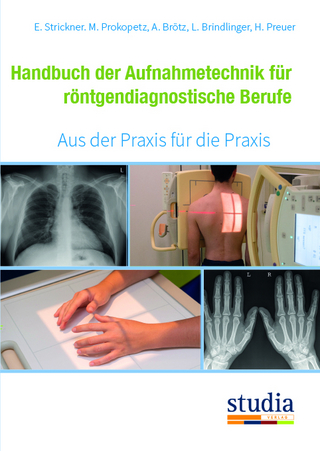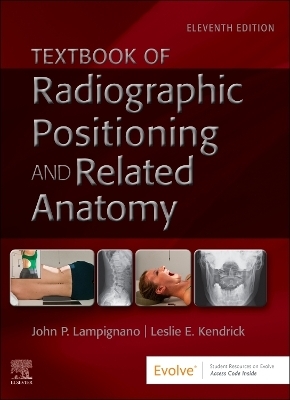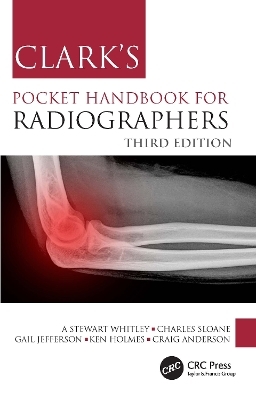
Unconventional Optical Imaging for Biology
Iste Ltd (Verlag)
978-1-78945-132-0 (ISBN)
Unconventional imaging systems provide access to physical quantities – phase, absorption, optical index, the polarization property of a wave or the chemical composition of an object – not accessible to conventional measurement systems. To achieve this, these systems use special optical setups and specific digital image processing to reconstruct physical quantities. This field is also known as computational imaging.
This book presents various non-conventional imaging modalities developed for the biomedical field: wave front analysis imaging, digital holography/tomography, optical nanoscopy, endoscopy and singlesensor imaging. Experimental setups and reconstruction algorithms are presented for each modality.
Corinne Fournier is Assistant Professor at Université Jean Monnet, France, and member of the Laboratoire Hubert Curien. She works in unconventional imaging and her research interests include the codesign (optics/image processing) of instruments, particularly interferometric microscopy applied to the biomedical field. Olivier Haeberlé is Professor at the Université de Haute-Alsace, France, and member of the Institut de Recherche en Informatique, Mathématiques, Automatique et Signal. His research interests include image formation mechanisms and new label-free microscopy techniques for cell imaging based on holography.
Introduction xi
Corinne FOURNIER and Olivier HAEBERLÉ
Chapter 1 Quantitative Phase Microscopy Using Wavefront Analysis 1
Serge MONNERET, Julien SAVATIER and Pierre BON
1.1 Introduction 1
1.2 Description of the principles used in phase imaging 2
1.3 Quadriwave lateral shearing interferometry for high spatial resolution wavefront analysis 5
1.3.1 Generation of incident field replicas 6
1.3.2 Determination of the incident wavefront 7
1.3.3 Wavefront sensor implementation 10
1.4 Using a wavefront sensor in microscopy 11
1.4.1 Necessary approximations 11
1.4.2 Experimental configuration 12
1.5 Applications to biological imaging 13
1.5.1 High-contrast imaging without labeling 13
1.5.2 Dry mass measurement in living biological cells 14
1.5.3 Rapid imaging for biological phenomena 17
1.5.4 Quantitative phase and fluorescence correlative imaging 19
1.6 Optical retardance imaging 21
1.7 Other applications and new developments 25
1.8 References 25
Chapter 2 Holography 29
Michel GROSS and Nicolas VERRIER
2.1 Introduction 29
2.2 Principle of holography 31
2.3 Selection of the +1 order 34
2.3.1 Off-axis holography 34
2.3.2 Phase-shifting holography 38
2.4 Holographic reconstruction 41
2.4.1 Fourier transform reconstruction 42
2.4.2 Two Fourier transform reconstruction (angular spectrum) 46
2.4.3 Two Fourier transform reconstruction with zero padding 48
2.4.4 Two Fourier transform reconstruction with the addition of a digital lens 49
2.5 Associated holographic configurations and applications 50
2.5.1 In-line holography 50
2.5.2 Off-axis holography 53
2.5.3 Holographic microscopy and quantitative phase imaging 55
2.6 Conclusion 59
2.7 References 60
Chapter 3 Inverse Problems for Image Reconstruction in Holography 63
Ferréol SOULEZ and Éric THIÉBAUT
3.1 Introduction 63
3.1.1 Notations 64
3.2 Direct model 64
3.3 Experimental application 66
3.4 Maximum likelihood approach 68
3.4.1 Formal expression 68
3.4.2 Noise statistics and likelihood 68
3.4.3 Backpropagation 69
3.4.4 Iterative methods for maximum likelihood estimation 70
3.4.5 Extrapolation of the field of view 70
3.5 Phase reconstruction: a nonlinear problem 73
3.6 Alternating projection methods 76
3.6.1 From alternating projection to criterion minimization 76
3.6.2 Maximum likelihood approach 77
3.7 Improving over the maximum likelihood 78
3.7.1 Penalized maximum likelihood 78
3.7.2 Bayesian interpretation: maximum a posteriori 80
3.8 Regularization functions and a priori 80
3.8.1 Quadratic regularization 80
3.8.2 Edge-preserving smoothing 81
3.8.3 Sparsity 82
3.8.4 Joint parsimony 84
3.8.5 Total variation 85
3.8.6 Plug and play regularization 85
3.9 Choosing the optimization algorithm for the solution of the inverse problem 85
3.10 Practical examples 87
3.10.1 Unconstrained and differentiable problem 87
3.10.2 Constrained problems 88
3.11 References 91
Chapter 4 In-line Digital Holographic Microscopy Sample Reconstruction 95
Fabien MOMEY, Thomas OLIVIER and Corinne FOURNIER
4.1 Introduction 95
4.2 From classical microscopy to digital holography in the biomedical field 96
4.3 In-line holographic microscopy setups 98
4.3.1 Imaging setup, with or without lens 98
4.3.2 Coherence and illumination setup 100
4.4 Typical IP methodology for in-line hologram reconstruction 103
4.4.1 Test case: in-line holograms of micrometric transparent objects 103
4.4.2 In-line hologram formation model 105
4.4.3 Digital reconstructions 112
4.5 Extended contribution of IP approaches: digital super-resolution and field extension 124
4.5.1 Direct problem 125
4.5.2 Criterion to be minimized 126
4.5.3 Alternating reconstruction algorithm 127
4.6 Going further 128
4.6.1 Model refinement and self-calibration 128
4.6.2 Multivariate data reconstruction 129
4.6.3 Toward 3D reconstruction 129
4.7 References 130
Chapter 5 Transmission Tomographic Diffractive Microscopy 133
Nicolas VERRIER, Matthieu DEBAILLEUL, Bertrand SIMON and Olivier HAEBERLÉ
5.1 Introduction 133
5.2 Holographic microscopy: utility and limitations 134
5.3 Link between diffracted field and index distribution 135
5.3.1 Principle 135
5.3.2 Helmholtz equation in a weakly inhomogeneous medium 136
5.3.3 Born approximation 138
5.3.4 Spectral support in 3D Fourier space 141
5.3.5 Holographic algorithm 142
5.4 From holography to tomography 143
5.4.1 Illumination rotation 143
5.4.2 Sample rotation 146
5.4.3 Sample and illumination rotation 147
5.5 Practical implementations 149
5.5.1 Sample rotation techniques 149
5.5.2 Scanning illumination techniques 151
5.6 Reconstruction under the Born hypothesis 153
5.6.1 Examples of commercial systems 154
5.7 Conclusion 155
5.8 References 158
Chapter 6 Interference Microscopy 163
Rémy CLAVEAU, Sébastien MARBACH, Stéphane PERRIN, Amir NAHAS, Manuel FLURY and Paul MONTGOMERY
6.1 Introduction 163
6.2 Principle and theory 165
6.2.1 Interference 165
6.2.2 Coherence of light 166
6.3 Algorithms 167
6.3.1 Phase-shifting microscopy 168
6.3.2 Coherence scanning interferometry 169
6.4 Instrumentation 171
6.5 Physical performance and limitations 172
6.5.1 Lateral resolution 173
6.5.2 Axial resolution 174
6.5.3 Spatial sampling 175
6.5.4 Sources of measurement error 175
6.6 Applications 176
6.6.1 Roughness measurement 176
6.6.2 The measurement of static surfaces 177
6.6.3 The measurement of moving surfaces 177
6.7 Recent findings 179
6.7.1 Full-field optical coherence tomography 179
6.7.2 Local spectroscopy 181
6.7.3 Microsphere-assisted microscopic interferometry 183
6.8 Conclusion 184
6.9 Acknowledgments 185
6.10 References 185
Chapter 7 Multimodal and Multispectral Endoscopic Imaging with Extended Field of View 191
Christian DAUL and Walter BLONDEL
7.1 Introduction to conventional endoscopy 191
7.1.1 Principle and medical applications of endoscopy 191
7.1.2 Relevance and limitations of conventional endoscopy 192
7.1.3 Chapter objectives and content 194
7.2 The functioning of endoscopes 194
7.2.1 Components of an endoscopic system 194
7.2.2 Pinhole camera model 197
7.2.3 Distortion modeling and correction 199
7.2.4 Vignetting modeling and correction 201
7.3 3D cartography of endoscopic scenes 203
7.3.1 Data registration from two viewpoints 203
7.3.2 3D cartography approaches 210
7.4 Multimodal and multispectral endoscopic imaging systems 217
7.4.1 Introduction 217
7.4.2 Chemical labeling imaging systems 218
7.4.3 Exogenous markerless imaging systems 221
7.5 Conclusion 225
7.6 References 226
Chapter 8 An Introduction to Single-Pixel Imaging 229
Nicolas DUCROS
8.1 Introduction 229
8.1.1 Mathematical formulation 231
8.1.2 Experimental implementation 231
8.2 Hadamard transform optics: the origins (1970–1980) 232
8.3 Compressed sensing: the revival (2006–2016) 236
8.3.1 Undersampled acquisition 236
8.3.2 Compressed sensing general principle 236
8.3.3 Choice of acquisition patterns 239
8.4 Deep learning reconstruction 241
8.4.1 General principle 241
8.4.2 Model architecture 241
8.4.3 Training 243
8.4.4 Simple link with conventional methods 244
8.4.5 Best linear estimator: Bayesian completion 246
8.4.6 Taking noise into consideration 249
8.5 Conclusion 253
8.6 Acknowledgments 254
8.7 References 254
Glossary 257
List of Authors 267
Index 271
| Erscheinungsdatum | 10.05.2024 |
|---|---|
| Verlagsort | London |
| Sprache | englisch |
| Gewicht | 709 g |
| Themenwelt | Medizin / Pharmazie ► Gesundheitsfachberufe ► MTA - Radiologie |
| Medizin / Pharmazie ► Medizinische Fachgebiete ► Radiologie / Bildgebende Verfahren | |
| ISBN-10 | 1-78945-132-9 / 1789451329 |
| ISBN-13 | 978-1-78945-132-0 / 9781789451320 |
| Zustand | Neuware |
| Haben Sie eine Frage zum Produkt? |
aus dem Bereich


